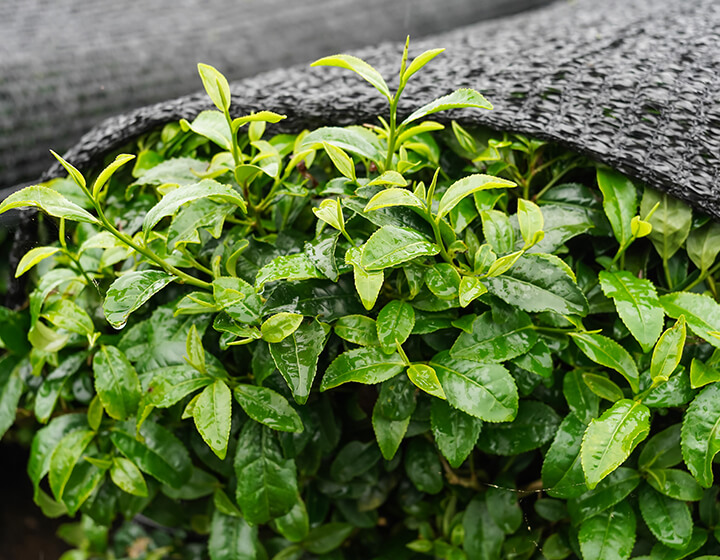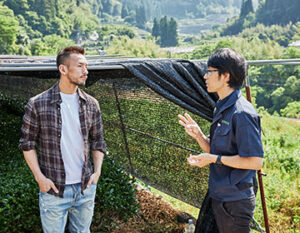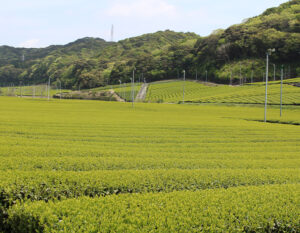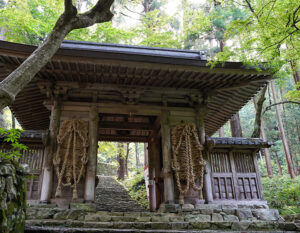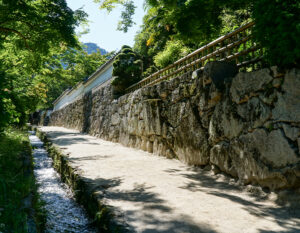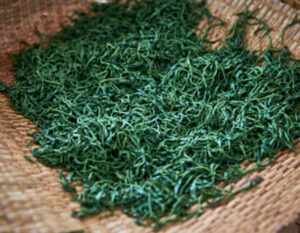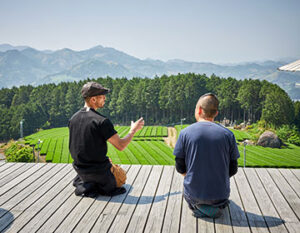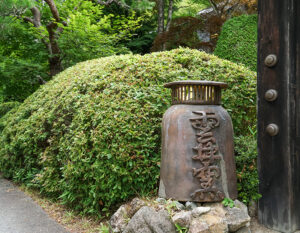Shiga Prefecture is said to be the birthplace of Japanese tea. The origin of Japanese tea is said to date back to 1200 years ago, in the early Heian period, when Saicho, the founder of the Tendai sect of Buddhism, brought back seeds from Tang China and planted them at the foot of Mount Hiei. We visited Mr. Haruki Fujimura, representative director of “Greentea Tsuchiyama,” a tea farmers’ cooperative in Shiga Prefecture, which is working to pass the baton of the tea industry to the future.
Tea production area developed in the Edo period (1603-1867)
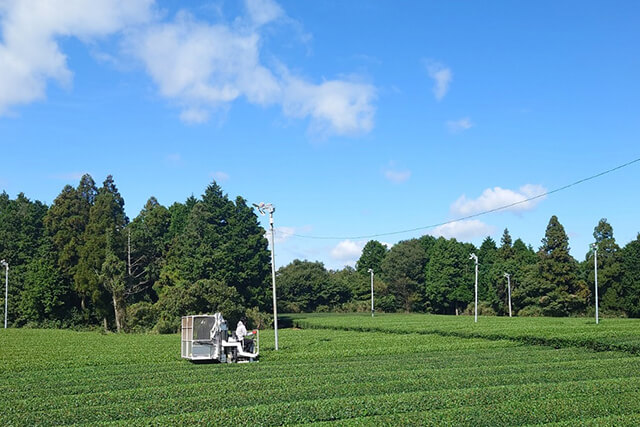
Tsuchiyama-cho, located in the southeastern part of Shiga Prefecture, boasts the largest tea production and cultivation area in the prefecture. 805, Saicho, who returned from Tang Dynasty China, introduced tea cultivation to Omi Province, which is now Shiga Prefecture, and tea production also began in Tsuchiyama. Since Tsuchiyama was an inn town on the Tokaido Highway, tea was sold to people passing by, and its production expanded dramatically in the Edo period ( 1603-1867). At its peak, Tsuchiyama used the same tea leaves as green tea to make black tea and export it overseas, but this became difficult after World War II began, and the region gained a foothold as a producer specializing in green tea.
Tea that can be enjoyed from the second brewing
There are several traditional tea production areas in Shiga Prefecture, such as Asamiya and Masadokoro, but Tsuchiyama is characterized by rolling hills with long hours of sunlight, rich underground water from the Suzuka mountain range, and a temperature difference between day and night. This makes it possible to grow long, thick tea leaves, which have a strong flavor and aroma, and are said to be delicious even after the second or third brewing. Characterized by its elegant, mild, and deep flavor, it has long been a specialty of Shiga Prefecture.
Producing “Kabusecha” with a strong flavor
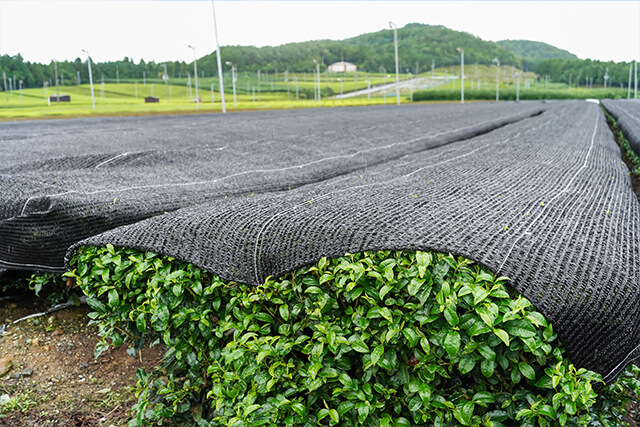
Another characteristic of Tsuchiyama is that it is known as a famous producer of “Kabusecha” tea. Kabusecha is a type of tea in which tea leaves are covered with a cloth or other covering before plucking to suppress the production of catechins and enhance the flavor and sweetness of the tea. The tea leaves that have been covered for a longer period of time are called “gyokuro,” and those that have been dried without being rubbed are called “tencha. Tencha is ground into a powder using a millstone, and this powder is called matcha, which is used in the tea ceremony.
Kabusecha production is thriving in Tsuchiyama, and has a solid track record, winning first place in Japan in the kabusecha category of the National Tea Fair.
Healing Tea from Tsuchiyama to the World
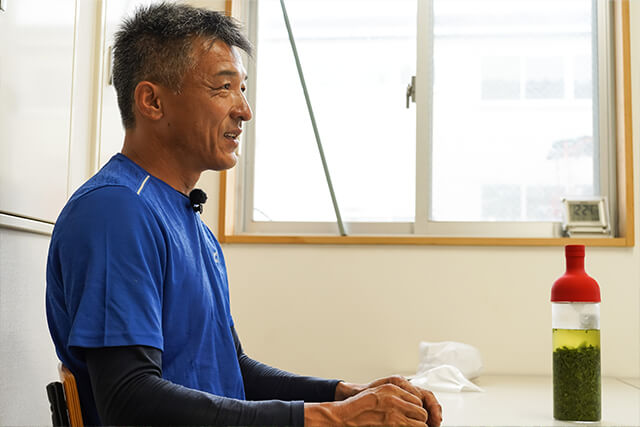
Haruki Fujimura is the representative director of “Green Tea Tsuchiyama,” an agricultural cooperative that produces tea with the concept of “bringing healing tea to the world. He has been in the tea industry since he was 22 years old, and has been in the business for 30 years this year. He wanted to acquire knowledge and skills beyond just making tea, so he became a certified Japanese tea instructor, also known as a “tea sommelier,” and is also involved in training young people at an agricultural university as an agricultural instructor.
In Tsuchiyama, many growers have traditionally produced Kabusecha, but about five years ago, we started producing about two thirds of our tea from Tencha, which is used to make Matcha. Japanese matcha has been booming overseas for the past few years, and the need for tencha will increase even more in the future.
Although the region as a whole has been increasing the percentage of its tea production from tencha processing every year, the price of tea itself has been declining in recent years, and producers are now facing a difficult situation.
From individual competition to regional cooperation in tea production
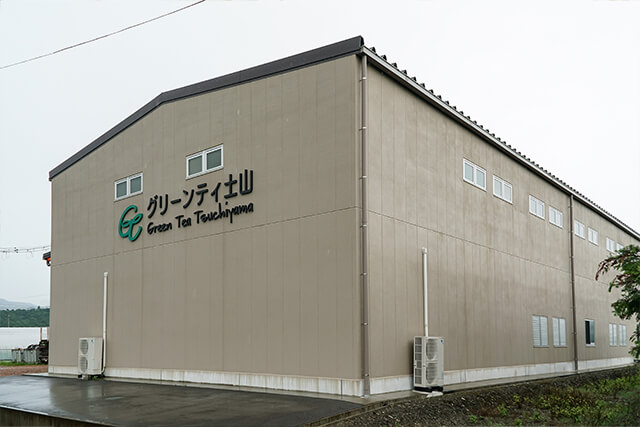
In order to overcome the difficult situation surrounding tea farmers, various reforms are being implemented in Tsuchiyama. One of these reforms is the establishment of an agricultural cooperative, Greentea Tsuchiyama.
One of the features of our company is that each member of the corporation is a farmer, but we all share the same fields and factories. In tea production areas, even though the factory is shared, it is rare to find an organization in which everyone shares the same fields. There is no such thing as an individual farm, but rather a system in which everyone works together to increase sales,” says Mr. Tsuchiyama.
Green Tea Tsuchiyama was originally established by Fujimura’s father in cooperation with five tea farmers.
At the time, when most tea farms were privately owned, many farmers were trying to ship their products as quickly as possible in a small area, which caused shipping times to overlap. To prevent this, Greentea Tsuchiyama was established to promote the joint purchase of fertilizers and the joint use of factories. Today, many young farmers belong to the company, and it has grown to the point where it produces about one-tenth of all tea produced in Shiga Prefecture.
Overcoming the adversity of being called a “cheap production area
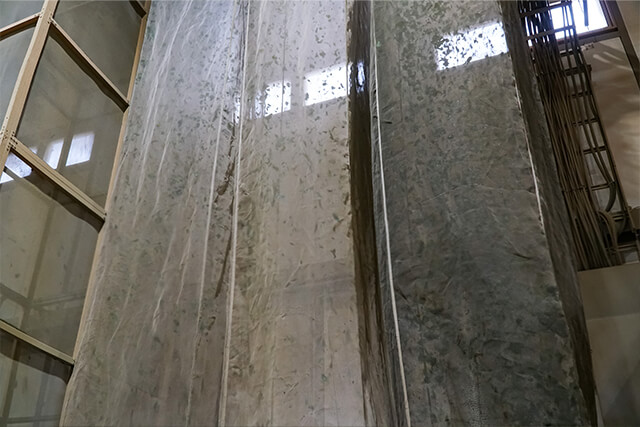
Green Tea Tsuchiyama handles all aspects of tea production in-house, from cultivation to processing and sales. In 2018, the company built a new factory for tencha, the first in the prefecture, with the aim of producing its own tencha, the raw material for matcha, to boost sales and meet demand for the tea in a wide range of products such as chocolate and confectionery.
The factory is located in the Tsuchiyama area, where frost occurs in early spring, so the early sprouts are damaged by the frost. Tea can only be harvested safely in Tsuchiyama after May, the middle of the season. It has often been said that “Tsuchiyama is an inexpensive production area” because the harvest here begins when harvesting is completed in all production areas in Japan, and the tea can finally be shipped when the price of new tea has dropped completely. So, in order to survive, we need a stronger ground than other production areas,” he says.
Original products that meet the needs of the times and applications
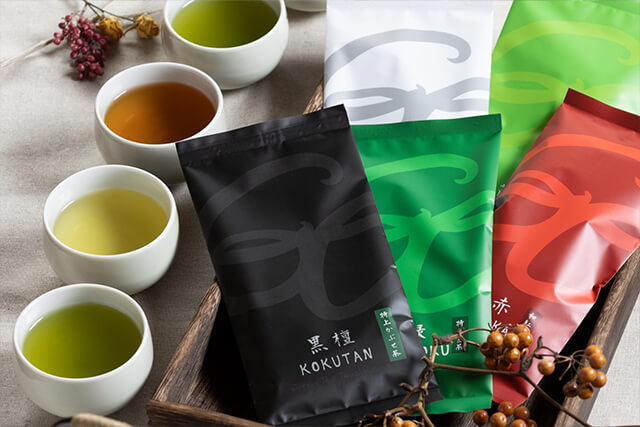
At the same time as establishing a tea production system, the company is also focusing on the development of original products.
KOKUTAN,” with its luxurious black packaging, is a special Kabusecha blending two varieties, a gem that offers the sweetness of “Sae-midori” and the refreshing crispness of “Okumidori”. It is made from the most aromatic and rich tea leaves harvested at Greentea Tsuchiyama.
Other products include Hakuji, a top-grade Kabusecha tea that is mild and recommended for daily use, and Hekiryoku, an extra-grade sencha with a refreshing aroma and moderate astringency.
Developing sweets to enjoy with tea
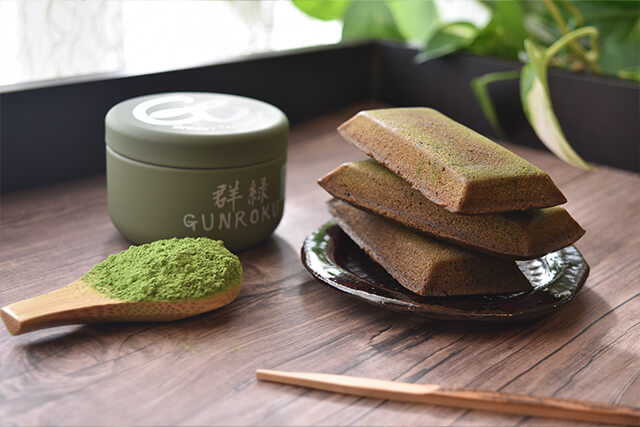
In an effort to further expand its product lineup, the company has begun developing products other than tea leaves, including “Matcha Financier” and “Roasted Tea x Benifuuki Financier,” the first processed foods made with the company’s own tea, which went on sale in 2020. We thought, “Why not have confections that are not limited to tea leaves alone? The development of confections that go well with tea has been well received by employees and customers alike. Mr. Fujimura’s goal is to increase the number of original products using tea, such as chocolates and cookies, and eventually sell them in his own stores.
Bringing the potential of tea to the future through the efforts of the entire tea-producing region.
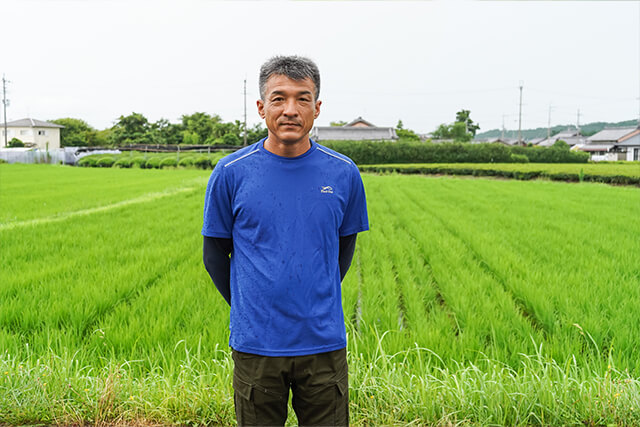
In 2022, a team of tea farmers, tea artisans, and agricultural cooperatives will launch a new hojicha brand called “Tsuchiyama Overnight Hoji. This initiative was started to make the name “Tsuchiyama” widely known. The tea leaves grown with great care in Tsuchiyama-cho are left to wilt naturally overnight (12 hours or more) to lose water, which gives the tea a flowery aroma. When the tea leaves are roasted, the sweet aroma of Taiwanese tea is followed by a savory aroma unique to hojicha, making it a tea that goes well with both Japanese and Western-style teas and meals. The tea is named “Overnight Hoji,” and is sold in a variety of variations by several businesses participating in this initiative.
I consider tea to be a luxury item, just like alcohol. In the past, people thought it was enough to just make tea as it is and sell it, but now I feel that the ideal way for a production center is to make tea that they can truly enjoy through trial and error, and then promote it. How many people can we create who will appreciate the taste of Tsuchiyama’s tea? That is what is necessary to continue tea production. With an eye on the future of tea, they are expanding beyond the boundaries of producers and companies. We look forward to the new challenges ahead for Mr. Fujimura and his team.



